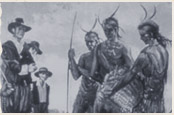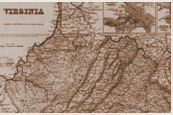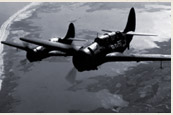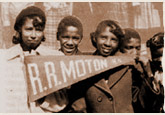"Four Freedoms" Speech
Franklin D. Roosevelt Presidential Library and Museum
"Four Freedoms" Speech (Audio Excerpt and Poster Art)
National Archives and Records Administration: Powers of Persuasion
Description: When President Franklin Roosevelt addressed his Annual Message to Congress in January of 1941, most of western Europe lay under Nazi domination. FRD's message continued his strategy of persuading the American people that the United States must come to the aid of the downtrodden peoples of Europe. He alerted Congress and the nation to the dire situation in Europe and laid before them the necessity of war. These paired resources contain the text of his speech in which he articulated the ideological aims of the conflict, appealing to Americans' most dearly held beliefs about freedom, an audio excerpt from the speech, and digital images of the famous Norman Rockwell posters inspired by what became known as the "Four Freedoms" speech. These resources can encourage students to ponder the United States' gradual abandonment of neutrality from several points of view and through a variety of media. Students also benefit from the immediacy of hearing FDR's own voice articulating the famous "Four Freedoms" passage from his Annual Message.
Teaching Tips:
"Do Now" Suggestion
- Students can look at the four Norman Rockwell posters (either on a computer or an overhead) and answer the following questions in an informal journal entry: a) What are FDR's 4 freedoms and how does Rockwell represent them in his posters? b) Do any stereotypes from the 1940s jump out at you from the images? c) Which 4 freedoms do you think our current president would choose to identify? d) How would current posters be different from Rockwell's posters and what would you include? As an introduction to a lesson on the causes of the United State's entry into WWII, the teacher could play the audio excerpt from FDR's Four Freedoms speech (maybe a couple of times because it is short). Students can write down, in their own words, FDR's four freedoms.
- After students grasp an understanding of the 4 freedoms emphasized by FDR from the audio excerpt, they can work alone or in pairs to complete a table. The table would include a list of the 4 freedoms and evidence from FDR's Annual Message to Congress (the students could also investigate FDR's Fireside Chat: On National Defense), which shows how the freedoms were threatened by the Axis powers. Students could compare FDR's "Four Freedoms" speech to Woodrow Wilson's War Message. How does each president paint a picture of the United States' need to enter WWII and WWI, respectively? Students could demonstrate the comparison in a number of different ways: Venn diagrams, political cartoons, war posters calling for support, or magazine covers. This exercise would be an excellent way for students to explore the changing role of the United States' foreign policy.



